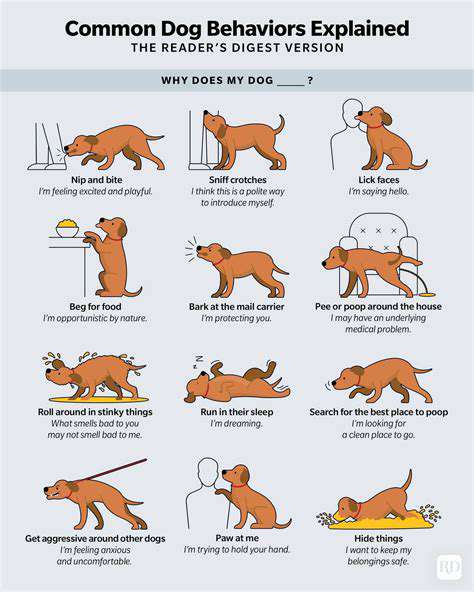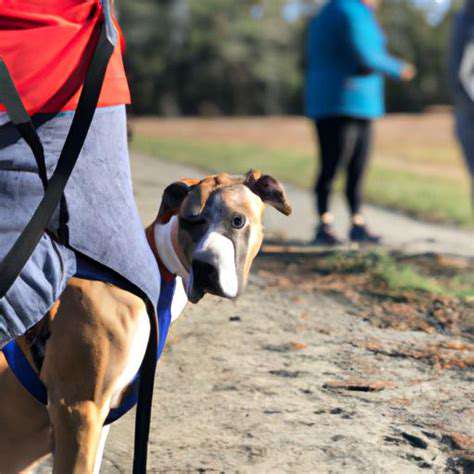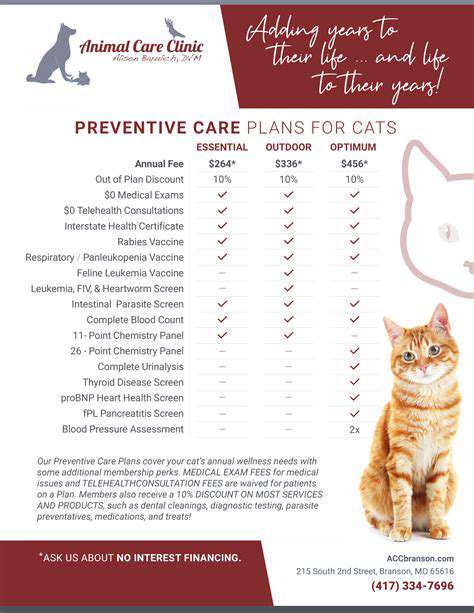Guide to Training Your Dog for Therapy Work
Obtaining Therapy Dog Certifications and Professional Guidance
Understanding the Different Therapy Dog Certifications
There are various organizations that offer therapy dog certifications, each with its own specific requirements and standards. Understanding these differences is crucial for prospective handlers. Some certifications focus more on temperament and social skills, while others emphasize obedience and responsiveness to commands. Researching the specific requirements of each organization will help you choose the certification path that best aligns with your dog's personality and your goals for therapy work.
Different certifications might also require different levels of training. A comprehensive understanding of the variation in these standards can help you plan your dog's training schedule, ensuring you're prepared for the specific tests and evaluations associated with each certification program.
Essential Training and Preparation for Certification
Thorough training is paramount for a therapy dog. This involves not only obedience training but also socialization training to ensure the dog is comfortable interacting with diverse individuals and situations. A well-trained therapy dog is calm, friendly, and responsive to commands, even under stress. This preparation often requires dedicated time and effort, and a commitment to ongoing training.
Beyond basic obedience, therapy dog training should encompass handling various situations, from crowded environments to loud noises. Preparing your dog for different scenarios will enhance its ability to perform effectively during therapy visits. Practice sessions in diverse settings can help your dog adapt and maintain composure under pressure.
Finding Reputable Organizations and Trainers
Selecting a reputable therapy dog organization and trainer is vital for a positive and successful experience. Look for organizations with clear guidelines, a strong track record, and a commitment to ethical handling practices. Thoroughly researching potential trainers and organizations is essential to ensure they align with your expectations and values.
Reading reviews and testimonials from other handlers can offer valuable insights into the quality of training programs and the support provided by the organization. This research will help you select the best fit for your dog's needs and your expectations for therapy dog training.
The Role of Professional Guidance in Therapy Dog Certification
Professional guidance from trainers and mentors is invaluable throughout the therapy dog certification process. Experienced trainers can provide personalized guidance, tailored to your dog's specific needs and your individual goals. They can offer support in overcoming challenges and addressing any behavioral issues that may arise during training.
A skilled trainer can help you assess your dog's strengths and weaknesses, helping you develop a tailored training plan. This personalized approach is essential for maximizing your dog's potential and ensuring a successful certification journey.
Managing Expectations and Understanding the Commitment Involved
It's crucial to have realistic expectations about the commitment required for therapy dog certification. Training and preparation take time, patience, and dedication. Understanding this commitment from the outset is vital to avoiding disappointment. Therapy dog work is a partnership between handler and dog, requiring a consistent and devoted approach.
The process of obtaining therapy dog certification is not merely about meeting requirements; it's about building a strong bond between you and your dog, while also fostering a supportive and reliable partnership for the benefit of those the dog will help in the future. A thorough understanding of the dedication needed will help you successfully navigate the process.
Read more about Guide to Training Your Dog for Therapy Work
Hot Recommendations
- Review: [Specific Brand] Small Animal Cage
- Why Rescuing Pets Saves Lives
- Best Pet First Aid Kits [What to Include]
- How to Help Stray Animals in Your Community
- Guide to Adopting a Pet When You Have Kids
- Top Reptile Heat Lamps
- Heartwarming Rescue Stories That Will Inspire You
- Review: [Specific Brand] Bird Cage
- Best Aquarium Filters [2025 Review]
- Review: [Specific Brand] Smart Litter Box







![Life with My [Specific Pet Type/Breed] [Pet Diary]](/static/images/33/2025-07/TheUnbreakableBond3AMyPersianCompanion.jpg)
![Review: [Specific Brand] Calming Diffuser for Pets](/static/images/33/2025-07/EffectivenessinReducingPetAnxiety.jpg)
![My First Time Fostering a Kitten [Story]](/static/images/33/2025-08/LessonsLearnedandFuturePlans.jpg)

